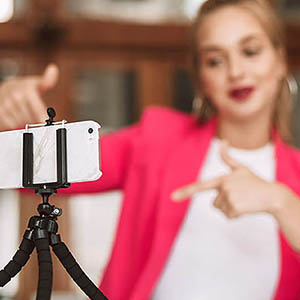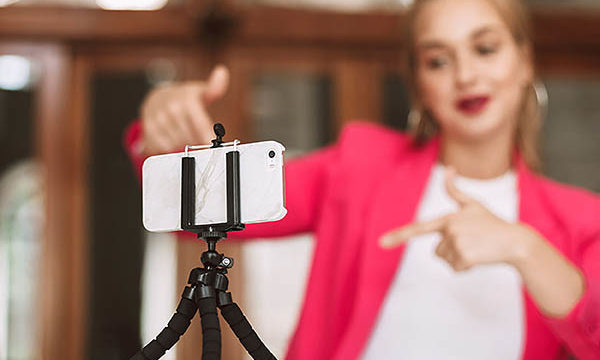Quality over quantity is one of the core pillars of a good modern marketing strategy.
Micro influencers are exactly that when it comes to leveraging the influence of others to promote your brand or business.
Let’s dig into what they really are and why they matter.
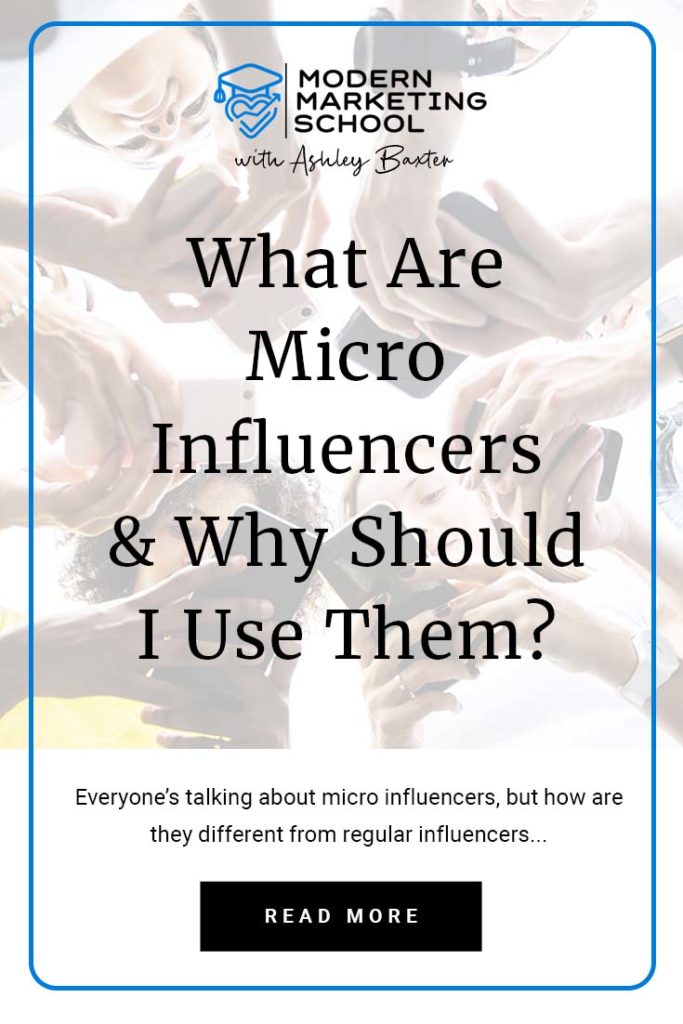
WHAT IS INFLUENCER MARKETING?
In influencer marketing, brands promote themselves by working with individuals that have a massive online following. These influencers may be celebrities, household names, or even considered the most well-known authorities in their niche.
If you want an example of a traditional influencer, look no further than Kim Kardashian. With more than 140 Million followers on Instagram, Kardashian is not only a household name but also a successful business woman with a strong personal brand in fashion and beauty.
Over the year’s she has been known for paid promotions of brands other than her own as an influencer. From Flat Tummy Tea to Sugar Bear Hair, her social posts are big business and great exposure for companies who want to reach her audience. But the cost is not cheap.
Business Insider reports that a recent lawsuit revealed brands are paying Kardashian between $300,000 – $500,000 to make a single post about their products or services. In the example below, she was paid for an Instagram post promoting a teeth whitening kit from HiSmile.
So what’s a brand to do if they can’t shell out hundreds of thousands per post to work with influencers?
“MICRO” MEANS MEANINGFUL
Micro influencers are a bit like traditional influencers. However they have a much smaller following (between 1,000 – 100,000 followers on each social network).
As a result, they promote brands for much lower rates. But what’s more important is that they often have more authentic relationships with their audience. Why does that matter? Because…
Influencer marketing means nothing without engagement.
Most brands will see more engagement (and better overall results) by working with a handful of micro influencers than they will from working with one mega influencer like Kardashian.
INFLUENCER MATHEMATICS
Smart marketers have come to realize that there’s something that matters more than the number of followers an influencer has. That thing is how many people engage with their posts.
That metric is called an “engagement rate”.
While micro influencers have a smaller audience, they also tend have a far higher engagement rate than their larger counterparts.

The graphic above gives you a quick and easy formula to calculate an influencers engagement rate per post. However, there are many free calculators that will do the math for you. For this post we used the influencer engagement calculator from the folks over at Phlanx.
LOOKING AT THE DIFFERENCE
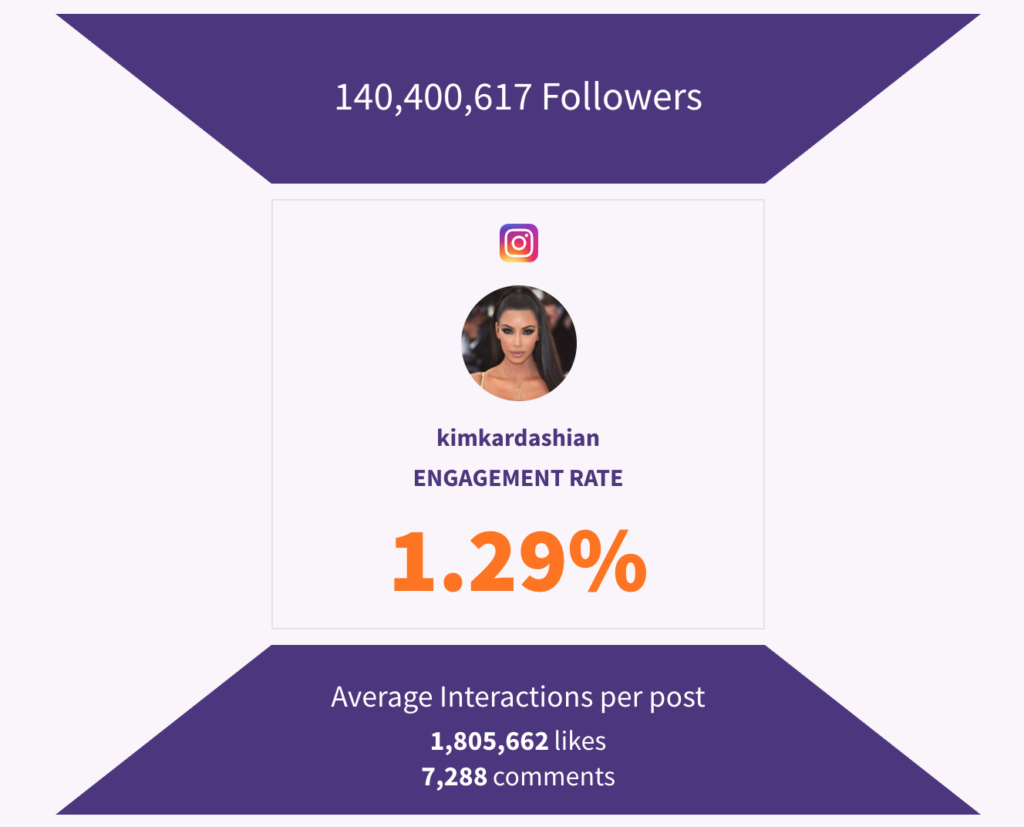
At the time of writing, Kardashian had an engagement rate of 1.29%. That’s on the low end of industry standards for expected engagement rates with influencer content. 1% – 4% is considered average engagement with 4% – 6% considered high engagement.
Anything less than 1% misses the mark of true influence. You can assume that the individuals audience has a large volume of bots. They may even have followers that are more detractors (the official marketing term for haters) than they are fans.
Because Kim’s initial audience is so large, she’s an exception to the rule and still pulls in almost 2 million engagements per posts. However, you can guess that most of her followers don’t actually know her outside of social media and episodes of Keeping Up With The Kardashians.
Micro influencers, on the other hand, tend to fall on the high end of engagement rates. We’ll look at Brand Soul Activator & Business Coach, Minling Chuang, as an example.
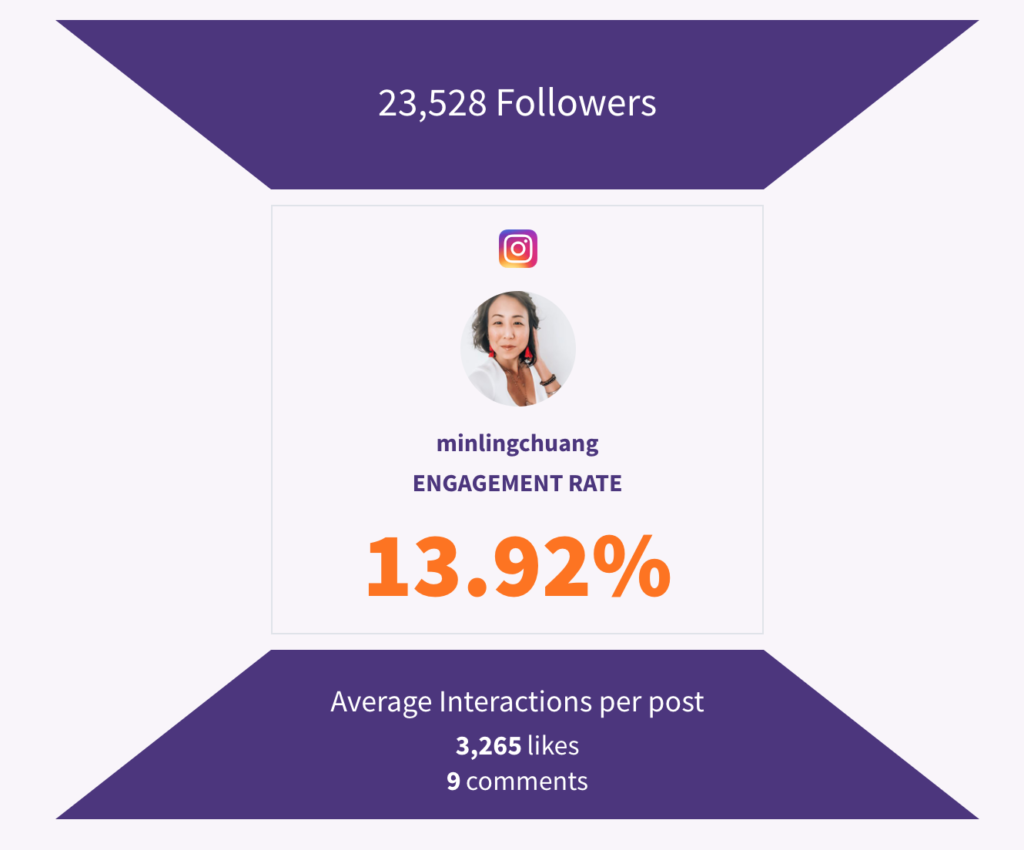
Chuang is a micro influencer with a strong personal brand in entrepreneurship and style. At the time of writing she had nearly 25k followers and an average engagement rate of 13.92%.
Engagement rates that high suggest strong trust and authenticity with her audience. Because it’s smaller, her followers are more likely to know her IRL (in real life) or have a connection to her that extends beyond social media.
In the eyes of her audience she’s closer to the category of “friends and family”. According to a study by Stakla, consumers place the opinions of this group at the top of their list when it comes to deciding how they spend their money.
60% of respondents to the study said that content from a friend or family member influences their purchases decisions, while just 23% said that content from celebrities influenced their purchasing decisions.
This makes micro influencers, like Chuang, a perfect marketing partner for brands geared towards stylish entrepreneurial women. at a cost much lower than $300,000 – $500,000 a post.
WHAT THIS MEANS FOR YOU?
Influencer marketing is a great way to leverage other people’s audiences to increase awareness for your brand. It’s applicable in nearly every industry from consumer goods to professional services and even to travel and experience based businesses.
Having a small budget shouldn’t be a barrier to entry. Consider using micro influencers and get creative with the benefits you can offer them to promote your brand.
Have you used micro influencers in your marketing? What were the results? Will you consider using them in the future? Tell us in the comments below.
